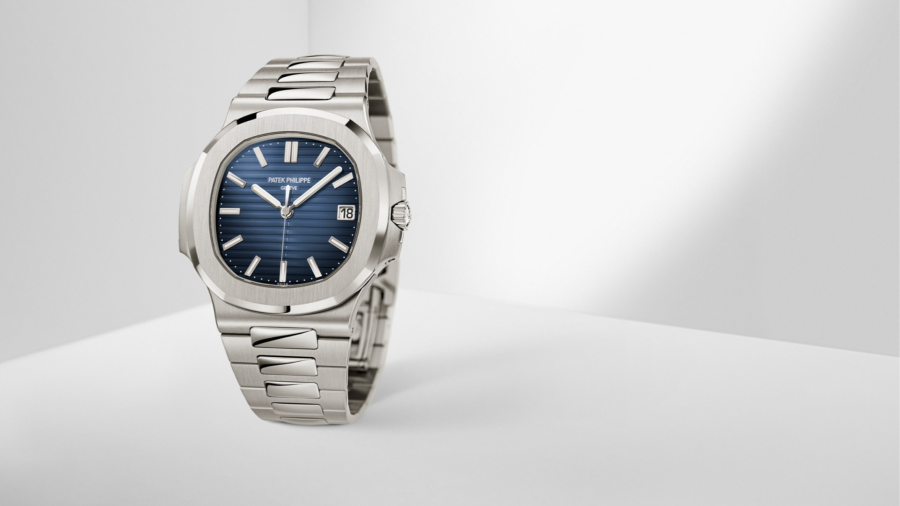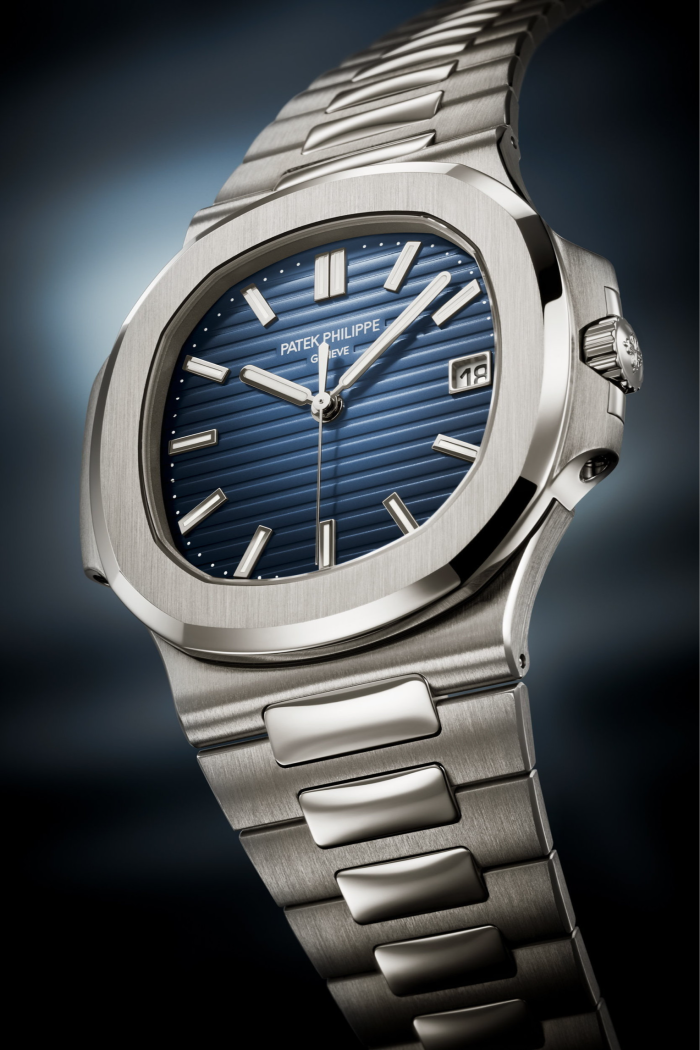
The wait is over. White smoke has issued from the chimney. At last, there is a successor to Patek Philippe’s fabled Ref 5711 Nautilus, the watch that more than any other has come to symbolise the craze for luxury steel sports bracelet watches.
In the watch world, the Nautilus enjoys a fame akin to that of the Birkin bag. Designed for Patek Philippe by Gérald Genta almost 50 years ago, in 1976, the Nautilus was a new Patek for a new customer. Until then the Swiss watchmaker had been known primarily as a maker of gold dress watches and complications. The Nautilus reached out to the younger generation. “The Nautilus was a link between a party guy, a gentleman and a sporty guy, a mix of all of that,” explains Thierry Stern, president of Patek Philippe, talking to me on the phone from Geneva.
Prima facie, the most noticeable thing about the new Ref 5811 is that it is barely distinguishable from the watch it replaces. Even side by side with its predecessor, anyone who isn’t a Patek obsessive will have difficulty playing this horological game of spot the difference.
At 41mm the case is a millimetre wider. Executed in a deeper blue, the gradient dial darkens and intensifies towards its edge, subtly enhancing the play of light over the face. The date window now features a pleasing delicate frame in white gold, and there is a return to the original two-piece case construction of the 1976 original, rather than the three-piece case construction that was introduced in 2006. It is in effect invisible to the naked eye: at 8.2mm in height the watch is an entire tenth of a millimetre slimmer.
Otherwise, the familiar styling signatures remain intact: the porthole-like case, the interplay of brushed and polished metal, and the smooth, seductive, supple-yet-strong integrated bracelet. “It’s like the Porsche 911,” explains Stern. “They change it slowly, but they’re always improving.”
Talking of improvements, the clasp is a dream. Heretical though it may sound to Patek fundamentalists, this did need improvement. The 5711 used to be secured by a little flip lock and the only way of adjusting the bracelet for hot weather wear was to take it to an authorised Patek dealer and have them insert another link or remove one link and add a slightly larger “one-and-a-half” sized link. Now there is an adjustable and lockable integrated extension system with which the wearer can add up to four millimetres. But the very fact that I succumbed to transports of delight about the bracelet closure reveals just how unbroken and not in need of fixing the original design is. “There was no real need to do anything else,” says Stern.
What really makes the Ref 5811, or to give it its full designation the 5811/G different is that it is not made of steel. The ‘G’, for gris, indicates white gold. Unless you know what you are looking at and feel the difference in the hand, white gold could be mistaken for steel (or for that matter platinum) except when it comes to the price: the last official retail price for the steel 5711 was £26,687, while the white gold 5811/G is £56,190. But in the crazy world of the Nautilus, where until recently steel 5711s have been selling for over £100,000 on the secondary market, the opportunity to purchase the watch at full price is tantamount to receiving a huge discount, with speculators rather than the brand or its retailers benefiting from its popularity.

“The most difficult part was having the courage to stop the 5711 and make a new one in white gold. I didn’t want to overproduce the 5711 in steel. First because it was steel, and I cannot only sell steel . . . otherwise I’m broke,” Stern exaggerates for humorous effect. “Secondly, like every piece, it has a start, and it has an end and I saw that it was time to make a new one, to protect the owners of the 5711. To protect the value, I had to stop it. I didn’t have a choice.”
I ask him whether he thinks that a brand owned by a group would have decided to stop producing a best-selling model because it was too popular. “No, never,” comes the robust response. “I’ll not worry about stopping an iconic watch, because I can make a new one.”
Are there plans for a steel 5811? “I don’t think so. I have to be vigilant,” he explains. “There are some major decisions for me to take. How far would I like to go with Patek Phillipe? Should I go up to 100,000 pieces? Or should I stay at 60,000 pieces? Or maybe . . .” he smiles mischievously, pauses, and adds provocatively “[up] to half a million?”
Too many steel watches and “the average price would be too low”. He is against charging a premium for steel just because secondary market prices are high (a limited edition Tiffany blue dial 5711, the first of the series, sold at auction for $6.5mn, around 120 times more than its retail price). “I could, but I will never do that. A steel watch has to be at a steel price, and that’s deeply inside me. I have to be very, very cautious with the steel quantity. I have a certain percentage, and I will not exceed that. If I want to create new steel watches, I have to stop some other steel watches,” he says of the retirement of the 5711.
“Now I have space to create something different in steel.” And smoke signals from Patek HQ indicate it will not be a Nautilus.
Find out about our latest stories first — follow @financialtimesfashion on Instagram